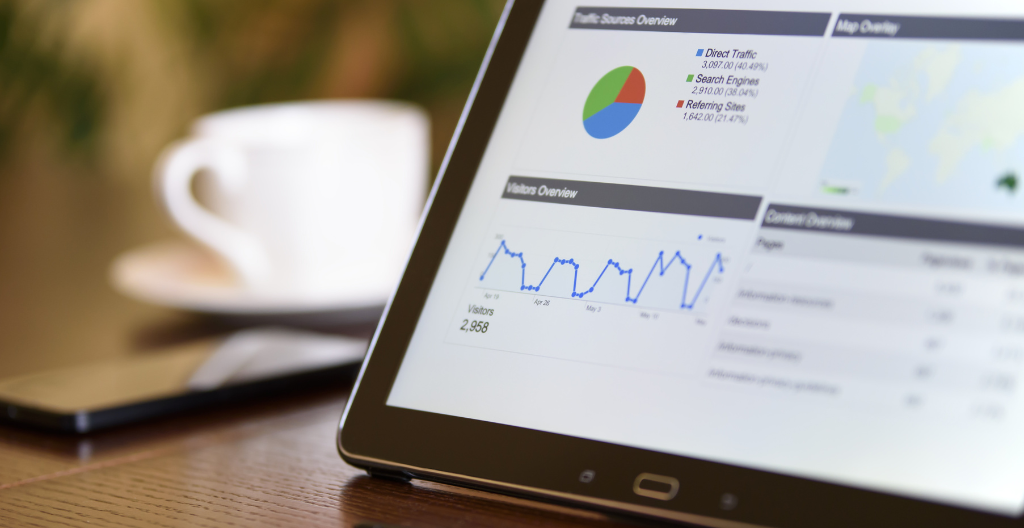
Why Invest in SEO
October 6, 2023
Why is PPC Management in Brisbane Crucial for Digital Marketing Success_
October 6, 2023Internal linking is a fundamental aspect of search engine optimisation (SEO) that often goes overlooked. It refers to the practice of creating hyperlinks within a website’s content that connect to other pages or resources within the same site. While it may seem like a simple task, internal linking plays a crucial role in enhancing a website’s overall SEO strategy. In this article, we will delve into the reasons why internal linking is important for SEO and how it can significantly impact a website’s search engine rankings and user experience.
Internal Linking: An Essential SEO Strategy
Due to its multifaceted benefits, internal linking is regarded as an essential SEO strategy. Firstly, it helps search engines understand the structure and hierarchy of a website, enabling them to crawl and index the content more effectively. Secondly, internal links distribute link equity throughout the site, improving the authority of individual pages and overall domain authority. Additionally, it enhances user experience by guiding visitors to relevant content and reducing bounce rates. Furthermore, strategic internal linking can facilitate the discovery of valuable content, keeping users engaged and increasing the likelihood of conversions. In summary, internal linking is an indispensable tool for optimising both the technical and user-facing aspects of a website, making it a cornerstone of successful SEO efforts.

Benefits of Internal Links for SEO

- Improved Search Engine Crawling: Internal links help search engines discover and index pages on your website more efficiently, ensuring that all your content is accessible to search engine bots.
- Enhanced Page Authority: Internal links distribute link equity (also known as PageRank) across your site, boosting the authority of individual pages and potentially improving their search engine rankings.
- Enhanced User Experience: Well-placed internal links guide users to related and relevant content within your website, making it easier for them to find information and navigate your site.
- Reduced Bounce Rates: By providing pathways to more content, internal links can reduce bounce rates as users are encouraged to explore additional pages, thus spending more time on your site.
- Keyword Optimisation: Internal linking allows you to use anchor text strategically, incorporating target keywords that can positively impact SEO efforts.
- Content Discoverability: Internal links can promote the discovery of older or less-visited content, increasing its visibility and usefulness to your audience.
These benefits highlight the importance of incorporating internal links as part of your SEO strategy to improve both search engine rankings and user experience on your website.
Link Equity and Its Role in Internal Linking for SEO
Link equity, often referred to as “PageRank” or “link juice,” is a critical concept in SEO that represents the value or authority passed from one web page to another through hyperlinks. In the context of internal linking, link equity plays a pivotal role. When you create internal links from high-authority pages to other pages within your website, you effectively pass on a portion of that authority to the linked pages. This distribution of link equity helps those linked pages rank better in search engine results, ultimately improving the overall SEO performance of your site. Properly structured internal links can channel this link equity strategically, ensuring that the most important and relevant pages receive the greatest benefit, thus enhancing your website’s visibility and search engine rankings.

Improved User Experience through Internal Linking
Internal linking contributes significantly to an enhanced user experience by offering clear pathways for visitors to navigate a website’s content. When done thoughtfully, internal links can guide users to related articles, products, or information, providing additional context and value to their visit. This makes it easier for users to find what they’re looking for and encourages them to explore more of your site, ultimately reducing bounce rates and increasing the time spent on your pages. By facilitating a seamless and logical journey through your website, internal linking not only improves user satisfaction but also keeps them engaged and more likely to convert or return for future visits, thereby fostering a positive and productive user experience.

Site Architecture and Its Relationship with Internal Linking for SEO
An ideal site architecture and internal linking are intricately connected in the realm of SEO. Site architecture refers to how web pages are organised and structured within a website. When internal linking aligns with this architecture, it creates a logical and hierarchical layout that search engines can easily understand and navigate. By strategically linking pages together based on their thematic relevance and hierarchy, internal linking reinforces the site’s structure. This not only aids search engines in crawling and indexing the content more effectively but also ensures that link equity is distributed to the most important pages. Thus, a well-organised site architecture supported by strategic internal links is crucial for optimising a website’s SEO performance, as it enhances both search engine visibility and user experience.

Best Practices for Incorporating Internal Links Within Website Content
#Use Descriptive Anchor Text: Ensure that the anchor text you use for internal links is descriptive and provides context about the linked page’s content. Avoid generic terms like “click here.”

#Maintain Relevance: Link to pages that are directly related to the current content. The linked pages should offer additional information or value to the reader. #Avoid Overloading with Links: Don’t overuse internal links within a single piece of content. Keep them relevant and use them sparingly to avoid overwhelming the reader. #Utilise Natural Placement: Place internal links in a way that feels natural within the flow of the content. They should enhance the user’s experience rather than disrupt it. #Optimise for Mobile: Ensure that internal links are easily clickable and accessible on mobile devices to accommodate mobile users’ browsing habits. #Open Links in the Same Tab: Generally, it’s a good practice to open internal links in the same browser tab or window to maintain a seamless user experience, reserving opening in a new tab for external links. #Perform Regular Audits: Periodically review and update your internal links to ensure they remain accurate and relevant, especially as your website’s content evolves. #Create a Sitemap: Consider creating a sitemap page that provides an organised overview of your website’s structure and key pages, with internal links to those pages for easy navigation. #Prioritise User Experience: Always keep the user experience in mind when incorporating internal links. They should enhance navigation, provide value, and improve the overall quality of the content. Following these best practices for internal linking can help you create a more user-friendly and SEO-optimised website with well-integrated internal links.
Link Evaluation: How Search Engines Like Google View and Assess Internal Links
Search engines like Google assess internal links as a crucial factor in understanding a website’s structure and content hierarchy. These search engines rely on complex algorithms to determine the relevance and authority of web pages. Internal links play a role in this evaluation process by indicating which pages are considered important within a site based on the number and quality of links pointing to them. Google also evaluates the anchor text used in internal links to determine the content’s topic. Additionally, the depth and organisation of internal linking can influence how frequently a page is crawled and indexed. In essence, search engines view internal links as a signal of a page’s significance, and they use this information to rank pages in search results, ultimately impacting a website’s overall visibility and SEO performance.

Potential Pitfalls in Implementing Internal Links for SEO
One common pitfall when implementing internal links for SEO is over-optimisation. This occurs when website owners or content creators excessively use keyword-rich anchor text in their internal links, which can be seen as manipulative by search engines and result in penalties. Another mistake is neglecting the user experience. If internal links are not naturally integrated into the content and disrupt the flow or confuse users, it can lead to higher bounce rates and lower engagement. Additionally, having too many internal links on a single page can dilute the flow of link equity and make the page look spammy. Lastly, broken or outdated internal links can harm user experience and SEO efforts. Regularly auditing and maintaining internal links to ensure they lead to relevant and functioning pages is essential to avoid these pitfalls.

Concluding Thoughts on Why Internal Linking Is Important
In the ever-evolving landscape of SEO, internal linking remains a cornerstone strategy for good reason. It serves as the architectural backbone of a website, allowing search engines to crawl, index, and understand content more efficiently. Beyond the technical aspects, internal linking enhances user experience by guiding visitors to related and valuable content, reducing bounce rates, and increasing the time spent on a website. Moreover, it distributes link equity strategically, boosting the authority of essential pages and ultimately improving search engine rankings. When executed thoughtfully, internal linking not only benefits SEO but also empowers website owners to engage their audience effectively and deliver a richer, more informative experience. In essence, internal linking is not just a best practice; it’s a fundamental tool for achieving online success in today’s digital landscape.





